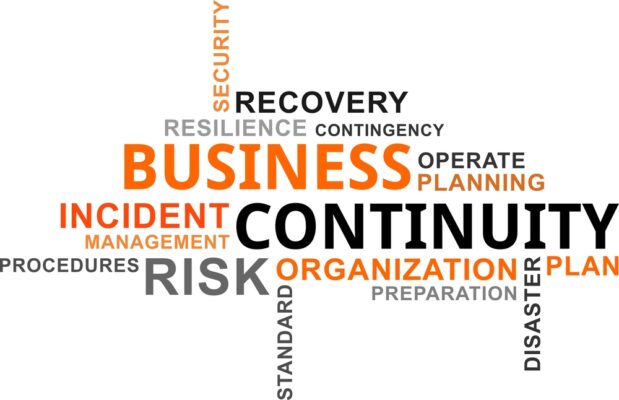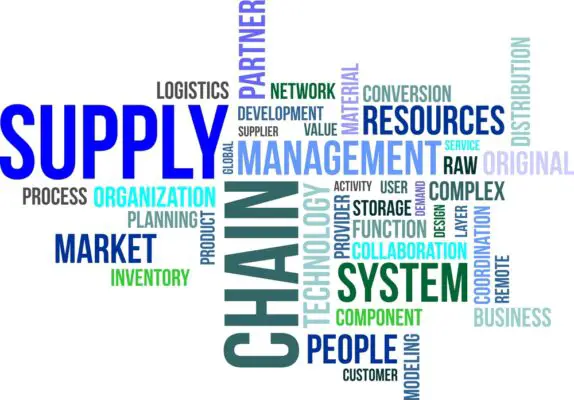A business continuity plan (BCP) is a crucial document that outlines how an organization will continue to operate during and after an unexpected disruption. It is a blueprint that guides the organization’s response to events that could cause significant harm to its operations, reputation, and bottom line.
A well-crafted BCP should help an organization minimize the impact of disruptive events and ensure it can continue delivering essential products and services to its customers.
A business continuity plan typically includes a range of procedures, policies, and protocols that help an organization respond to a crisis.
It may address issues such as data backup and recovery, supply chain management, communication strategies, and employee safety.

The plan should provide clear guidance on how the organization will respond to different types of disruptions, from natural disasters and cyberattacks to pandemics and power outages.
Key Takeaways
- A business continuity plan is a crucial document that outlines how an organization will continue to operate during and after an unexpected disruption.
- A well-crafted BCP should help an organization minimize the impact of disruptive events and ensure it can continue delivering essential products and services to its customers.
- A business continuity plan typically includes a range of procedures, policies, and protocols that help an organization respond to a crisis.
Understanding Business Continuity Planning
Defining Business Continuity
Business Continuity Planning (BCP) is a process that involves developing a plan to prevent and recover from potential threats that could disrupt business operations.
The plan outlines how a company will continue to operate during and after a disaster or other disruptive event. A Business Continuity Plan (BCP) is a comprehensive document that outlines the procedures and protocols that a company will follow to ensure it can continue to operate in the event of a disaster.
Importance of a Business Continuity Plan
A Business Continuity Plan is critical for any organization, regardless of size or industry. The plan helps to identify potential risks and vulnerabilities that could impact business operations and outlines a plan to mitigate those risks.
By having a BCP in place, a company can minimize the impact of a disaster on its operations, protect its employees, and ensure that its customers are taken care of.
Some of the key benefits of having a Business Continuity Plan include:
- Minimizing downtime: A BCP helps to minimize downtime by outlining the procedures that need to be followed in the event of a disaster. This ensures the company can operate smoothly during and after the disaster.
- Protecting employees: A BCP helps to protect employees by outlining the procedures that need to be followed in the event of a disaster. This ensures that employees are safe and their needs are handled during and after the disaster.
- Protecting customers: A BCP helps to protect customers by ensuring that the company can continue to provide its products and services even during and after a disaster. This helps to maintain customer loyalty and trust.
In summary, a Business Continuity Plan is critical to any organization’s risk management strategy. By having a plan in place, a company can minimize the impact of a disaster on its operations, protect its employees, and ensure that its customers are taken care of.
Components of a Business Continuity Plan
A Business Continuity Plan (BCP) is a comprehensive plan that outlines the procedures and strategies an organization will follow during a disaster or emergency.
A well-designed BCP is crucial for ensuring that an organization can function during and after a crisis. Here are some of the key components of a BCP:
Business Impact Analysis
A Business Impact Analysis (BIA) is an essential component of a BCP. It is a process that identifies and evaluates the potential impact of a disaster on an organization’s critical business functions, processes, and systems.
The BIA helps to determine the recovery time objective (RTO) for each critical business function, which is the maximum amount of time that each function can be down before it causes significant harm to the organization.
During a BIA, the organization should identify its critical business functions and the resources required to support them.
The BIA should also evaluate the potential impact of a disaster on the organization’s employees, customers, suppliers, and other stakeholders.

Recovery Strategies
The recovery strategies section of a BCP outlines the procedures that an organization will follow to recover its critical business functions and systems after a disaster.
The recovery strategies should be designed to minimize the impact of the disaster on the organization and its stakeholders.
The recovery strategies should include procedures for restoring critical business functions and systems, such as data backup and recovery, system restoration, and communication with stakeholders.
The recovery strategies should also include procedures for testing and validating the effectiveness of the BCP.
A well-designed BCP is a crucial tool for ensuring that an organization can function during and after a crisis. The BCP should include a business impact analysis and recovery strategies designed to minimise a disaster’s impact on the organization and its stakeholders.
Developing the Business Continuity Plan
A Business Continuity Plan (BCP) is a critical document that outlines an organization’s strategy for dealing with potential disruptions to its operations.
Developing a BCP requires a comprehensive understanding of the organization’s policies, governance, roles, and responsibilities. Here are two essential subsections that should be covered in developing a BCP.
Policy and Governance
The first step in developing a BCP is establishing a policy and governance framework that outlines the organization’s objectives, scope, and approach to business continuity.
This framework should be developed in collaboration with senior management and should include the following components:
- Objectives: Clearly defined objectives that outline the purpose of the BCP and the expected outcomes.
- Scope: The scope of the BCP should be clearly defined, including the business units, processes, and systems that will be covered.
- Approach: The approach to business continuity should be established, including the methodology, tools, and techniques used.
Once the policy and governance framework has been established, the next step is to define the roles and responsibilities of the team responsible for developing and implementing the BCP.
Roles and Responsibilities
The BCP team should comprise individuals from various departments within the organization, including IT, operations, and risk management.
Each team member should have clearly defined roles and responsibilities, including the following:
- BCP Coordinator: The BCP Coordinator is responsible for overseeing the development and implementation of the BCP.
- Business Unit Representatives: Business Unit Representatives are responsible for identifying critical business processes and systems and providing input into the BCP development process.
- IT Representatives: IT Representatives are responsible for identifying critical IT systems and infrastructure and providing input into the BCP development process.
- Risk Management Representatives: Risk Management Representatives identify potential risks and threats and provide input into the BCP development process.
Developing a BCP requires a comprehensive understanding of an organization’s policies, governance, roles, and responsibilities.
By establishing a policy and governance framework and defining the roles and responsibilities of the BCP team, organizations can ensure that they are prepared to deal with potential disruptions to their operations.
Operational Procedures and Employee Training
In order to ensure that business operations continue without disruption, companies need to have a comprehensive business continuity plan (BCP) in place.
This requires the development of operational procedures and employee training programs that help minimise any potential disruptions’ impact.
Emergency Response Procedures
One of the key components of any BCP is the development of emergency response procedures. These procedures should outline the steps employees should take in the event of an emergency, such as a natural disaster, cyber attack, or other unexpected event.
This includes procedures for evacuating the building, contacting emergency services, and communicating with other employees and stakeholders.
Companies should also consider developing a crisis management team responsible for coordinating the response to any emergency.
This team should comprise key employees from across the organization and have the authority to make decisions and take action in an emergency.
Training and Awareness Programs
Another important aspect of a BCP is the development of training and awareness programs for employees. This includes training programs that help employees understand their roles and responsibilities in an emergency, as well as awareness programs that help promote a culture of preparedness and resilience within the organization.
Training programs should cover various topics, including emergency response procedures, communication protocols, and the use of any specialized equipment or systems.
Companies should also consider conducting regular testing and drills to ensure employees are prepared to respond effectively in an emergency.
In addition to training and awareness programs, companies should also consider developing a business continuity awareness program that helps to promote a culture of preparedness and resilience within the organization.
This can include regular communication with employees about the importance of business continuity planning and the development of policies and procedures that support the implementation of a BCP.
Communication Management
Effective communication is a crucial element of a business continuity plan. It ensures that all stakeholders are informed and updated about the situation, essential for a swift and coordinated response.
Communication management can be divided into two categories: internal and external communication.

Internal Communication
Internal communication refers to the dissemination of information within the organization. It involves keeping employees, partners, and other stakeholders informed about the situation and the steps being taken to mitigate it.
This can be achieved through various means such as email, text messages, phone calls, or internal messaging systems.
To ensure effective internal communication, it is essential to have up-to-date contact information for all employees and stakeholders.
This information should be regularly reviewed and updated to ensure accuracy. Additionally, it is recommended to have a designated communication team responsible for managing internal communication during a crisis.
External Communication
External communication refers to disseminating information to customers, suppliers, and other external stakeholders.
It involves communicating the impact of the crisis on the organization’s operations and the steps being taken to mitigate it.
During a crisis, it is essential to have a designated spokesperson who can communicate with external stakeholders. This person should be well-informed about the situation and have the authority to speak on behalf of the organization.
It is also important to have up-to-date contact information for all external stakeholders, including customers and suppliers. This information should be regularly reviewed and updated to ensure accuracy.
Communication management is critical to a business continuity plan. Effective communication ensures that all stakeholders are informed and updated about the situation, which is essential for a swift and coordinated response.
Organizations can ensure that their communication efforts are effective and efficient by having up-to-date contact information and a designated communication team.
Dealing with Technology and Systems
Regarding business continuity planning, technology and systems are crucial in ensuring operations can continue even during a disruption.
In business continuity planning, we will cover two key aspects of technology and systems: protecting IT infrastructure and data backup and recovery.
Protecting IT Infrastructure
To protect IT infrastructure, businesses should have a backup plan for their critical systems. This includes identifying which systems are most important to the business and ensuring they are backed up regularly.
In addition, businesses should have a disaster recovery plan that outlines the steps needed to recover from a system failure or outage.
One way to protect IT infrastructure is to use redundant systems. This means having multiple servers, storage devices, and other critical components that can take over in a failure.
Businesses can also use load balancing to distribute traffic across multiple servers, which can help prevent downtime in a web server failure.
Data Backup and Recovery
Data backup and recovery is another critical aspect of business continuity planning. Businesses should have a plan in place for backing up their data, and this plan should include both on-site and off-site backups.
On-site backups can be done using external hard drives or other storage devices, while off-site backups can be done using cloud-based services.
In addition to backing up data, businesses should also have a plan for recovering data in the event of a disaster. This plan should include procedures for restoring data from backups and ensuring that the restored data is accurate and up-to-date.
Protecting technology and systems is a critical aspect of business continuity planning. By having a backup plan in place for critical systems and data, businesses can ensure that they are able to continue operations even in the event of a disruption.
Supply Chain and Third-Party Considerations
Business continuity plans should address supply chain and third-party considerations to prepare for unexpected disruptions. These considerations include managing supply chain risks and collaborating with third parties.
Managing Supply Chain Risks
Businesses should prioritize critical suppliers and resources to ensure the continuity of the supply chain. They should also assess supply chain issues and develop contingency plans to mitigate risks.
This can include diversifying suppliers, increasing inventory levels, and implementing alternative transportation methods.
In addition, businesses should establish communication channels with suppliers to ensure timely and accurate information sharing. This can help identify potential disruptions and allow for proactive planning.

Collaboration with Third Parties
Collaboration with third parties is essential for business continuity. Businesses should partner with key third-party vendors, contractors, and service providers. They should also ensure that these partners have their business continuity plans.
Businesses should establish clear roles and responsibilities for all parties involved to ensure effective collaboration. This can include defining communication protocols, escalation procedures, and decision-making processes.
A comprehensive business continuity plan should include supply chain and third-party considerations to ensure that businesses are prepared for unexpected disruptions.
By managing supply chain risks and collaborating with third parties, businesses can mitigate the impact of disruptions and maintain business operations.

Chris Ekai is a Risk Management expert with over 10 years of experience in the field. He has a Master’s(MSc) degree in Risk Management from University of Portsmouth and is a CPA and Finance professional. He currently works as a Content Manager at Risk Publishing, writing about Enterprise Risk Management, Business Continuity Management and Project Management.

